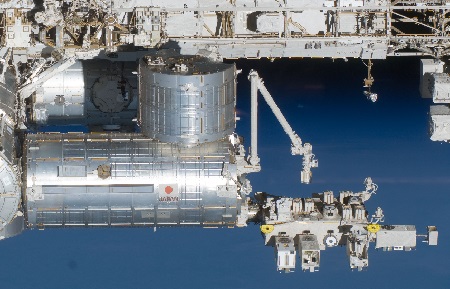This is an archive of information released in the past.
Disclaimer: It may contain broken links or outdated information. Some parts may not function in current web browsers.
*Visit https://humans-in-space.jaxa.jp/en/ for the latest information.

Japanese Experiment Module (KIBO)
Japanese Experiment Module (Kibo)
The Japanese Experiment Module (JEM), known as "Kibo" (pronounced key-bow) which means hope in Japanese, is Japan's first human-rated space facility and the Japan Aerospace Exploration Agency's (JAXA's) first contribution to the International Space Station (ISS) program.
Kibo was designed and developed with a view to conducting scientific research activities on orbit. In Kibo, a maximum of four astronauts can perform experimental activities.
Currently, wide variety of scientific, medical, and educational experiments are conducted on Kibo. As a part of the ISS, Kibo provides extensive opportunities for space environment utilization.
Resources necessary for Kibo's on-orbit operation, such as air, power, data, and cooling fluid, are provided from the US segment of the ISS.
Major Component
Kibo is a complex facility consisting of the following six major elements.
- Pressurized Module (PM)
- Exposed Facility (EF)
- Experiment Logistics Module-Pressurized Section (ELM-PS)
- Experiment Logistics Module-Exposed Section (ELM-ES)
- Japanese Experiment Module Remote Manipulator System (JEMRMS)
- Inter-Orbit Communication System (ICS)
Milestones toward launch
All element components of the Japanese Experiment Module (JEM) "Kibo" are tested at the Tsukuba Space Center (TKSC) before shipping to NASA Kennedy Space Center (KSC) in preparation for launch.
| Copyright 2007 Japan Aerospace Exploration Agency | Site Policy |
